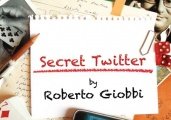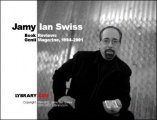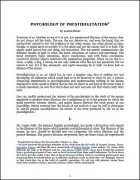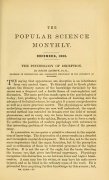Theory, Articles & Reviews in Magic & Conjuring
Authors
Products
| Sort by: Product Name Author | Listed | Price |
Don't Look Now! The Smart Slant on MisdirectionAl Leech Al Leech wrote this classic text on the presentation of magic in 1948, and it has been essential reading ever since. The ebook goes into depth on the application of psychology to magic, misdirection, how best to fool people, how to make them like you, and similar topics. ... | $9.95 to wish list | |
Tenyo Plus OneSolano An entertaining look at the annual enchanting Tenyo bonus program from 1996 to 2023. The T-series of Tenyo magic tricks is world-famous. Less well-known is the "Plus 1" series, which is only available in Japan and only for points that can be collected with purchased T-series tricks. For almost 30 years, a new trick has been released every year in this Plus 1 series. Solano presents these 28 tricks here. It is a wonderful collector's theme that contains many a trick-technical gem.
| $15 to wish list | |
How to Routine a Magic ShowWilliam W. Larsen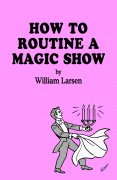 An informative handbook that tells the secret of how to properly routine a magic act or show. Especially valuable to semi-pro and amateur performers, it tells how to put your tricks to work and will help put your magic hobby on a self-supporting basis. You may be capable of performing a hundred tricks, but if you lack the knowledge of how to put together an entertaining routine, you won't get the big fees. This manuscript tells you how. Best of all, it tells you how to do it with those tricks you already own and which you can perform. This ebook not only gives the simple fundamental... | $8 to wish list | |
Triplets 10Gregg Webb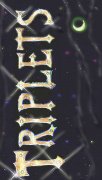 This volume, Volume 10, will be the last issue of Triplets. It will include Magic News including some new contacts and various pieces of magic news. Following this will be many "Thank you's" to all the people who helped me over the years. The next essay will be a retrospective of the theories that have guided my movements of minimalism and streamlining. These go back to the 60's and 70's when every trick in every magazine ended with "lap the extra item", to end. Many other trends began with ideas that were ahead of their time. While there have been great thinkers along the way, my magic... | $4.95 to wish list | |
Triplets 9Gregg Webb This issue will begin with an essay called "What a Place for a Mission Statement!" by Gregg Webb. Indeed, 9 issues in and a Mission Statement? Anyway, it should make Gregg's position on magic even more clear for any newcomers. The next section is about ideas for mentalists. Here is how to revamp your entire lifestyle to make it easier to convince others that you are a mentalist ... before you even begin. You don't even have to change your name (although in some cases it may help). Other ideas include having your business card re-printed differently. And, looking through your wardrobe.... | $4.95 to wish list | |
Triplets 6Gregg Webb This is an all-mentalism issue, and the first essay is about the various kinds of mentalism, to help you describe your "powers" to your audience. These include Thought Reading, Remote Viewing, Precognition, Drawing Duplication, Clairvoyance, Psychometry, Living and Dead Tests, and also Metal Bending, and Psychic Healing (Faith Healing) and unusual "powers" such as Handwriting Analysis. Calling your feats by the correct type of power will go a long way in establishing yourself as an expert. The next essay is about presentations that may be new to you so that your act will have more thought... | ★★★★★ $4.95 to wish list | |
Dictionary of GamblingJohn S. Salak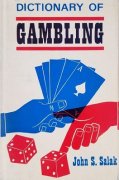 A dictionary for the language of horse racing, dice and cards, bookmakers and runners, touts and tote boards, a colorful but expensive language to learn first-hand from the natives. Excerpt from the preface: The invitation to compile a Dictionary of Gambling was an intriguing one. One we wouldn’t turn down on a bet, so to speak. Here was a subject which just about everyone, to some degree, was acquainted with and one which, in the sober reflection of a depleted bankroll, just about everyone, to some degree, realized they just didn’t know enough about. It should prove to be, if not... | $15 to wish list | |
Aether 11: Creativity and OriginalityGregg Webb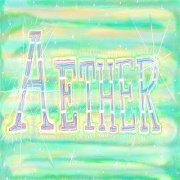 If you think you have no creativity in you, you should read this article. Gregg describes concrete examples of his own creative process and development and how you can start with baby steps to ease yourself into becoming more creative. Progressively you take bigger and bigger challenges to ultimately create your own tricks. Gregg Webb encourages magicians to create some original magic tricks, even though there is plenty of good material out there, for several reasons. It is a good exercise for the part of the brain that thinks creatively, and that part gets stronger by use. Also, even though... | ★★★★★ $4.95 to wish list | |
Attention Please!Joel Howlett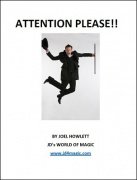 In March 2022 there was a unique gathering of professional magicians in Sydney Australia. Joel Howlett was one of the lecturers on the bill and he discussed performing exciting visual magic that caters to modern audiences who have shortening attention spans. Participants were invited to take an honest look at the effects they were using before the COVID pandemic and reassess if they might be a little slow-moving for today's audiences. This PDF is a brief outline of the points discussed. 1st edition 2022, PDF 7 pages. | $5 to wish list | |
OPS Magic: F.U.N. Presentation SeriesKen Muller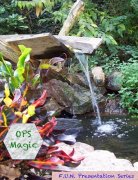 Overture - Prelude - Scaffold as alternative presentation modes for crafting a magic routine (conjuring or mentalism). What to do with a mixed or new live audience where little is known about their experience with live magic, conjuring or mentalism? (might apply to Zoom type presentations as well) How can you discover their interest and expectations for what you can offer without wasting your best routines or risking interruptions? This ebook will guide you through an exploration of three alternative presentation modes with a 'mixed audience' where little is known of their expectations,... | $6 to wish list | |
Virtual Magic Show Set-UpWolfgang Riebe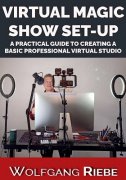 A practical guide to creating a basic professional virtual studio. Times have changed and virtual magic shows have become commonplace all around the world. Do you have a virtual studio in your home and do your Internet broadcasts come across as professional? Or do you shy away from the technology and not sure where to start? Here is a great booklet aimed at the beginner in the virtual space who has a limited budget. A few options are shared, from basic to advanced, including how to make the best of what you currently have, and how to add to your studio with various simple, professional, yet... | $10 to wish list | |
Magic Awareness: F.U.N. Presentation SeriesKen Muller A collection of stories, poems, and reflections about magic - inexplicable phenomena in life that impact our audience, or you as the performer. This can be inspirational or focusing for novices, amateurs, collectors, or professionals. I wrote this a decade ago as a Christmas gift for magic friends around the world, but it could be an ideal gift to others or self at any time. "This book is written for those who have chosen to make of performance magic something more than an onlooker or student - those called magicians, conjurors, mentalists, illusionists, and magical entertainers (and their... | ★★★★★ $6 to wish list | |
Showmanship and PresentationEdward Maurice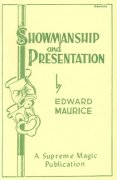 Tips and tricks from a Vaudeville professional including openers, audience appeal, costume, make-up, and a lot more. The ideal is to have a director who pays attention to these areas, but most magicians are performers and directors rolled up into one person. It is therefore important to read and study showmanship and presentation. From the introduction by Park Shackleton: It is now, thank goodness, many many years since I cared two hoots how a trick was done (i.e., the actual secret which is of no importance). I am only interested in how it is presented (which is of vital importance). ... | ★★★★★ $7 to wish list | |
Make Music Fit MagicBrian T. Lees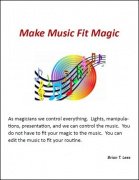 Do not stall and draw out your magic waiting for the end of your music. Do not rush your magic cutting corners and hurrying to fit the music. This text introduces you to the basic functions of music editing. Using music as background, or choreographing a routine to music is possible through editing. Take your show up to the next level using music you edit, to fit your manipulations and performance.
1st edition 2021, PDF | ★★★★★ $15 to wish list | |
Sound Advice for MagiciansPeter Mennie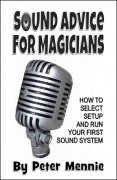 Let's face it, once you step in front of an audience you not only have to be seen, but you have to be heard. And just like the sleight of hand in your show has to be the best it can be, the sound has to be the best it can be as well. Your audiences deserve better than 'it's good enough'. Sound Advice For Magicians was written out of a lecture I do for magic clubs and clown alleys because I saw too many talented performers bomb in front of audiences because their sound system failed or the people running them were incompetent. In addition to performing full-time for over 40 years (with many... | $20 to wish list | |
Assistant: Cosmetic or ToolBrian T. Lees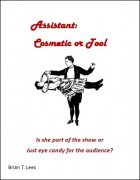 Is she part of the show? Or is she eye candy for the audience? There is a difference between a cosmetic and functional assistant. This text identifies the difference and helps you get started searching for, and working with an assistant.
1st edition 2021, PDF 25 pages. | $15 to wish list | |
20 Minute Set Empty HandedBrian T. Lees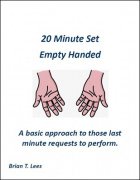 Out with your friends just to enjoy the evening. The manager comes up to you and says one of the acts did not show up. He asks you to do a 20-minute set. You didn't bring anything with you. All you can work with is what you can find on hand. Could you do it? This ebook offers some ideas you could use.
1st edition 2021, PDF 16 pages. | ★★★★★ $5 to wish list | |
Satchel of Secrets: F.U.N. Presentation SeriesKen Muller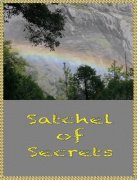 Learn some "real secrets of magic" - not the stuff that comes in the box. Gleaned from 60+ years of performing under various conditions. Dozens of quotes, ideas, ponderings and quips about performing magic that will change the way you perform, deal with audiences, create routines, select volunteers, practice and more. No magic effects are taught here, just exciting ways to be better at what you do - and to appreciate being a magician. 1st edition 2018, 16 pages. | $3 to wish list | |
Audience ConnectionBrian T. Lees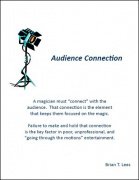 The difference between an average and great magician is the audience connection. Audience members text, talk with their neighbors and do other things because they are not tuned in, connected, with the performance. This ebook identifies the connection, points out the importance, and covers a few tools magicians can use to capture and strengthen that connection.
1st edition 2021; PDF 17 pages. | $10 to wish list | |
I'm Not AfraidMackenzie Gant & B. W. McCarron If you suffer from any kind of performance anxiety (and Kellar, Thurston, Houdini, and many prominent present-day performers have had to deal with it, too), this could be the best purchase you'll ever make. There's nothing like the healthy satisfaction or "natural high" that comes from giving a great performance. Yet if you suffer from performance anxiety (commonly known as stage fright), then you're missing out on one of the best feelings that entertainers can experience. When you're ready to rid yourself of these demons, this manuscript contains 40 proven ideas that have helped others like you to put aside... | $10 to wish list | |
CreativityBrian T. Lees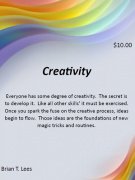 Everyone has creativity. When you select the color to paint a room, pick out an outfit to wear or the wrapping on a present you are exercising a form of creativity. One only has to recognize that, and learn to develop it. New magic is the result of someone coming up with an idea and developing it into a trick/routine. This ebook identifies creativity and the creative process. I have included a step by step narration of one of my signature tricks "the magical egg tray". The process begins with an initial idea and works through sequential steps to bring the routine to the finish. Creativity, like... | $10 to wish list | |
The Secret GateDartagnan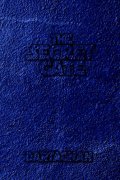 The oldest, most pernicious, and insoluble problem in the history of magic was stated best by Henning Nelms, in his 1969 Magic and Showmanship: A Handbook for Conjurers ... "No matter how astonishing a trick may be, it suffers from one major fault - it has no point." This ebook is the long-sought-after answer to that statement. [Please note that access to appendix 11 and 12 requires registration at the author's website.]
| ★★★★★ $20.20 to wish list | |
Psychological Notes Upon Sleight-of-Hand ExpertsJoseph Jastrow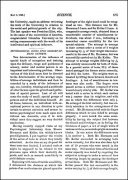 Jastrow wondered if the pursuit of sleight-of-hand conjuring develops any special motor or mental powers. He invited Alexander Hermann and Harry Kellar and put them through a range of tests comparing them to average folks. In this article you will find out how these two giants of conjuring compare to the average. From the introduction: Having recently enjoyed visits at my Psychological Laboratory from Messrs. Hermann and Kellar, the widely-known prestidigitators, I put together the results of the series of tests to which they kindly submitted. As the time at my disposal for these tests was limited,... | $3 to wish list | |
The Psychology of Conjuring DeceptionsNorman Triplett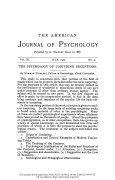 This study identifies deep lying instincts and impulses of the psychic life are the basic elements in conjuring. Its aim is to show the psychological reasons of deception of a magic effect. It also provides an extensive classification of magic tricks. Contents:
| $5 to wish list | |
Psychology of PrestidigitationAlfred Binet | $3 to wish list | |
A Comparison of the Gravatt and Hugard Encyclopedias of Card MagicWilliam B. Rugh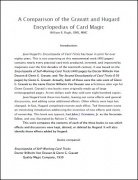 This work compares the contents of Jean Hugard's Encyclopedia of Card Tricks, Encyclopedia of Self-Working Card Tricks, and The Second Encyclopedia of Card Tricks by Glenn G. Gravatt, to see which effects and discussions were kept, altered, or deleted by Hugard. It will also identify those effects added by Hugard. 1st edition 2020, PDF 19 pages. | ★★★★★ $5 to wish list | |
Magic BackupBrian T. Lees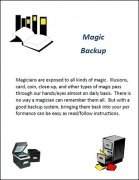 Magicians are exposed to all kinds of magic. Illusions, card, coin, close-up, and other types of magic pass through our hands/eyes almost on a daily basis. There is no way a magician can remember them all. But with a good backup system, bringing them back into your performance can be easy as read/follow instructions.
1st edition 2020, PDF 16 pages. | $8 to wish list | |
The Psychology of LegerdemainMax Dessoir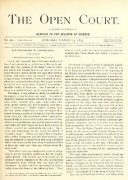 This is an interesting analysis of how a magic trick works in terms of psychological processes. A better understanding of the underlying science does help the performing magician. Translated from the German by Mrs. Emily S. Boyer. The original German essay appeared in Psychologische Skizzen by Edmund W. Rells, which was a pseudonym of Max Dessoir. 1st edition 1893, PDF 21 pages. | ★★★★★ $3 to wish list | |
The Psychology of DeceptionJoseph Jastrow | ★★★★★ $3 to wish list | |
Fogelism: An Attitude to LifeMaurice Fogel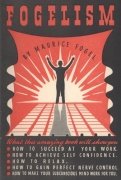 The famous British mentalist, Maurice Fogel, leveraged his success as performer to branch out into the self-help category, by writing this book. He writes: There is no strange mysticism about Fogelism; it is simply a mental attitude towards life which, I have found, achieves unsuspected results. It is the logical training of one's mind so that it sizes up the approach to a problem and tackles it rationally, instead of allowing the magnitude of that problem to overwhelm.
| $10 to wish list | |
The Fortune Formula: Fogel's Top Secrets No. 2Maurice Fogel In this second manuscript in Fogel's Top Secrets series, he explains his system of how to develop a new routine, what he calls "The Fogel Formula". It is a system of how to structure and proceed with your training and development towards a particular goal. Fogel is using his success system for things he wants to achieve in general not just magic. Fogel demonstrates how his formula operates by applying it to a question he often received after his shows: "Can you tell fortunes?" To address this frequent question he developed a particular routine involving a zodiac chart. The chart, the routine,... | ★★★★★ $8 to wish list | |
Performance CloseBrian T. Lees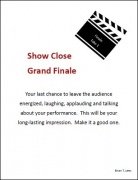 The close of your performance is your last chance to make a lasting impression on your audience. It should bring the audience to the peak of excitement, energize them and leave them talking about your magic. This text identifies the goals of the close. It provides examples and suggestions to help you develop a strong, effective close. Future performances often depend on the posture you leave your audience. Pull out all the stops, use all your tools to make your close one to be remembered.
| ★★★★★ $10 to wish list | |
The Wit and Wisdom of Mark LewisMark Lewis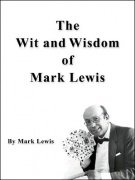 It's witty and it's full of wisdom. These are the ramblings of Mark Lewis on Internet forums. Irreverent and funny at times and full of deep thinking about magic and mentalism at other times. Many incredible anecdotes of his varied life as a fortune teller, magician and hypnotist. In addition to this are techniques described on how to pitch svengali decks, how to do psychic readings, and most important of all how to do magic with showmanship and verve. Included is a video clip of his legendary svengali deck routine which he has performed all over the world thousands of times plus tips... | ★★★★★ $15 to wish list | |
Performance OpeningBrian T. Lees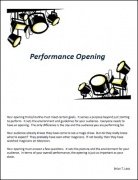 The two most important elements of a performance are the opening and close. The opening sets the environment for the audience to be entertained. The close is the magician's last chance to leave a lasting impression on the audience. To be effective, the opening must meet specific goals. This text identifies them and provides ideas, samples and recommendations to help the magician attain them.
| $10 to wish list | |
The Book Without WordsMihwonkuoy Refizul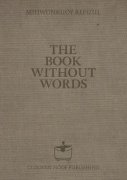 The real secrets on how to become the greatest magician in the world. Dedicated to the discerning conjurors, the cheaters, the liars, and all other lost souls - whatever age, who want to impress, manipulate, and magish other people for profit, fun, or just entertainment. Included is a very clever and creative book test, for all of you who require a strong effect to justify the purchase. The truth is delivered as a satire, which makes it a fun read, but at the same time delivers a profoundly deep and true message.
| ★★★★★ $6.66 to wish list | |
Entertaining by MagicHermann Pallme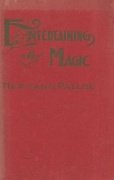 Not a trick in the ebook, but contains more real information on how to entertain with magic than you can get by reading a hundred others. Gives details so frequently neglected. Invaluable to any magician, for not only must one know how to do tricks, but he must also understand how to make his tricks entertaining.
| $5 to wish list | |
Misdirection for MagiciansDariel Fitzkee This is an early version of what would eventually become Magic by Misdirection. A detailed analytical treatment of the principles and methods. Explores the psychological basis and its adaptation to the performance of magic. Many detailed ruses included covering the entire field. How to develop misdirection to fit all situations. What it is and how it works. The first concrete work on a subject that is common to all effects and all performers. Paul Fleming wrote: Every magician knows - or ought to know - that misdirection plays a vital part in the creation of a perfect conjuring illusion. We recall, as an outstanding... | $5 to wish list | |
The Creative MindDon Bursell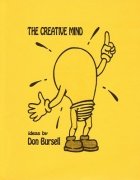 With 1000s of magic routines available, why do many magician's perform the same routines, without any change, modification or effort to make those routines unique? The Creative Mind is simply Don Bursell's ideas for creating new routines, brainstorming new variations, and keeping track of those ideas. The 2nd half are tricks that Don has created over the years, and based on advice from Jon Racherbaumer, wrote them down so as not to forget them. One of them, Headmover, has been an odd signature piece of Don's programs for over 20 years. Another routine, The Needles, is Don's solution to the East Indian... | $15 to wish list | |
Professional Show DevelopmentBrian T. Lees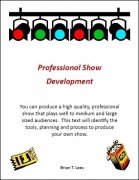 You do not have to hire a director, choreographer and technical designer to produce your own professional show. This ebook covers the environment, building your outline of magic, using music, and developing your show. Learn how to fine tune your performance through rehearsal, problem area recognition and the flow from opening to your finale. A high-quality professional production is within your grasp using a lot of materials you may already own.
| $30 to wish list | |
The Bibliography of Conjuring - and kindred deceptionsSidney W. Clarke & Adolphe Blind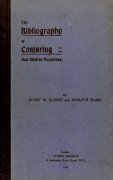 This bibliography collects about 2000 works that deal with tricks and illusions, and with the varied deceptions that are usually presented as part of a conjuring entertainment, including automata, chapeaugraphy, chemical and electrical tricks, escaping, fire handling, gamblers' tricks, hand-shadows, juggling, lightning sketches, optical illusions, pseudo-spiritualistic manifestations, second sight, thought reading, thought transference and ventriloquism. The list includes languages other than English in particular German and French books. Excluded are books on the so-called occult arts, but... | $10 to wish listPDF_facsimile | |
Magic ArtistrySam Sharpe | $25 to wish list | |
Good ConjuringSam Sharpe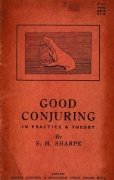
1st edition 1936, 40 pages; 1st digital edition 2019, 39 pages. | $10 to wish list | |
Conjured UpSam Sharpe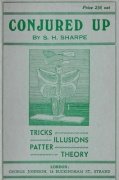
1st edition 1935, 40 pages; 1st digital edition 2019, 37 pages. | $10 to wish list | |
Great MagicSam Sharpe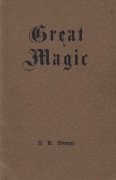 From the preface: When Neo Magic was finished I thought I had said all there was to say on "The Art of the Conjurer"; but before that book was off the press I found myself jotting down fresh observations on this fascinating, though neglected, subject. Magic Artistry is the result, which may be said to supplement Neo Magic. Many of the ideas put forward herein will be new to most conjurers; and, through being strange, may seem obscure or outlandish; but such an impression will doubtless pass as their meaning is grasped; though this may not be until the book has been carefully studied several times to get the mind in harmony... | $12 to wish list | |
Neo-MagicSam Sharpe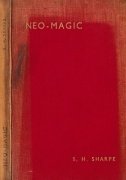 The art of the conjurer. Neo-Magic is the foundation for all of Sharpe's writing. Sharpe offers great insight into what makes magic magical. Starting with an analysis of art and its relationship to magic, Sharpe explores what he feels is needed for magic to become a fine art. He provides his insight into topics as originality, patter, styles of presentation, program construction, stage fright and others. From the preface to the second edition: What I have been doing over a considerable number of years is to find out, if possible, whether the answer to the question "Is conjuring a Fine... | ★★★★★ $25 to wish list |









